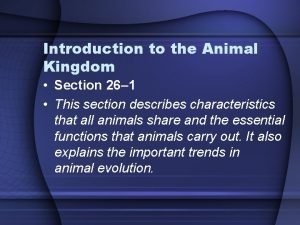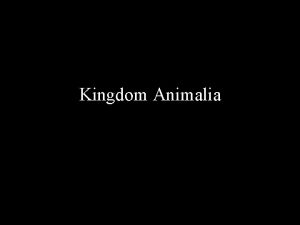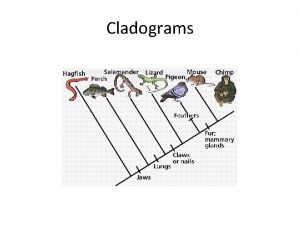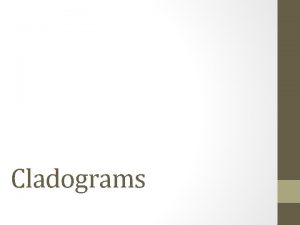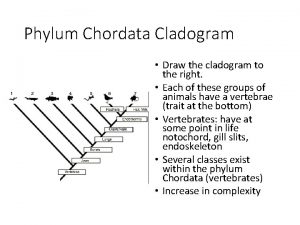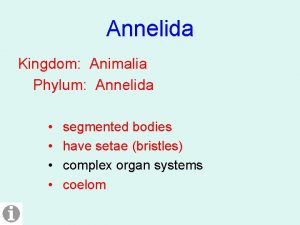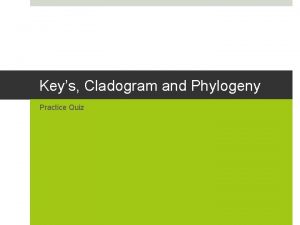Animal Kingdom Phylogeny Cladogram Section 29 1 Annelida








- Slides: 8

Animal Kingdom Phylogeny - Cladogram Section 29 -1 Annelida Mollusca Echinodermada Arthropoda Chordata Radial Symmetry Nematoda Platyhelminthes Pseudocoelom Cnidaria Radial Symmetry Protostome Development Three Germ Layers; Bilateral Symmetry Porifera Tissues Multicellular Single-celled ancestor Deuterostome Development Coelom

Egg Development • Sexual reproduction: zygote fertilized egg blastula hollow ball of cells with blastopore (inner tube) Protostome Mouth formed from blastopore Deuterostome Anus formed from blastopore

Germ Layers • Cells arranged into layers and from there specific organs or structures are formed. 1. Ectoderm – outer layer, forms skin, 2. Mesoderm – middle layer, forms muscles 3. Endoderm – inner layer, forms digestive tract

Body Symmetry • Asymmetrical – no symmetry, no tissue organization. • Radial – body parts extend from center of body. Cells start forming first tissues. • Bilateral – Mirror image of right and left sides externally. Tissues well developed.

Body Cavities • A body cavity is called a Coelom (see-lome). • Located between the digestive tract and the body wall inside the animal. • Allows for expansion and development. • Classification of organisms: 1. Acoelomate – no cavity present 2. Pseudocoelomate – partial body cavity 3. Coelomate – body cavity completely lined with mesoderm.

Cephalization • Concentration of sense organs and nerve cells at the front of the body. • Animals with bilateral symmetry exhibit it. • More complex animals the more pronounced their cephalization

Animal Kingdom Porifera Cnidaria Platyhelminthes Nematoda Mollusca Annelida Arthropoda Echinodermata Chordata

Animal Kingdom Phylogeny - Cladogram Section 29 -1 Radial Symmetry Pseudocoelom Radial Symmetry Single-celled ancestor







